Cooler nights, crisp mornings, and gardens that refuse to give up—fall in Virginia is too beautiful to miss.
Don’t settle for fading summer flowers. These 25 fall-blooming choices will turn your yard into a season-long show of color, texture, and charm that lasts right up to frost.
1. Chrysanthemum (Garden Mum)
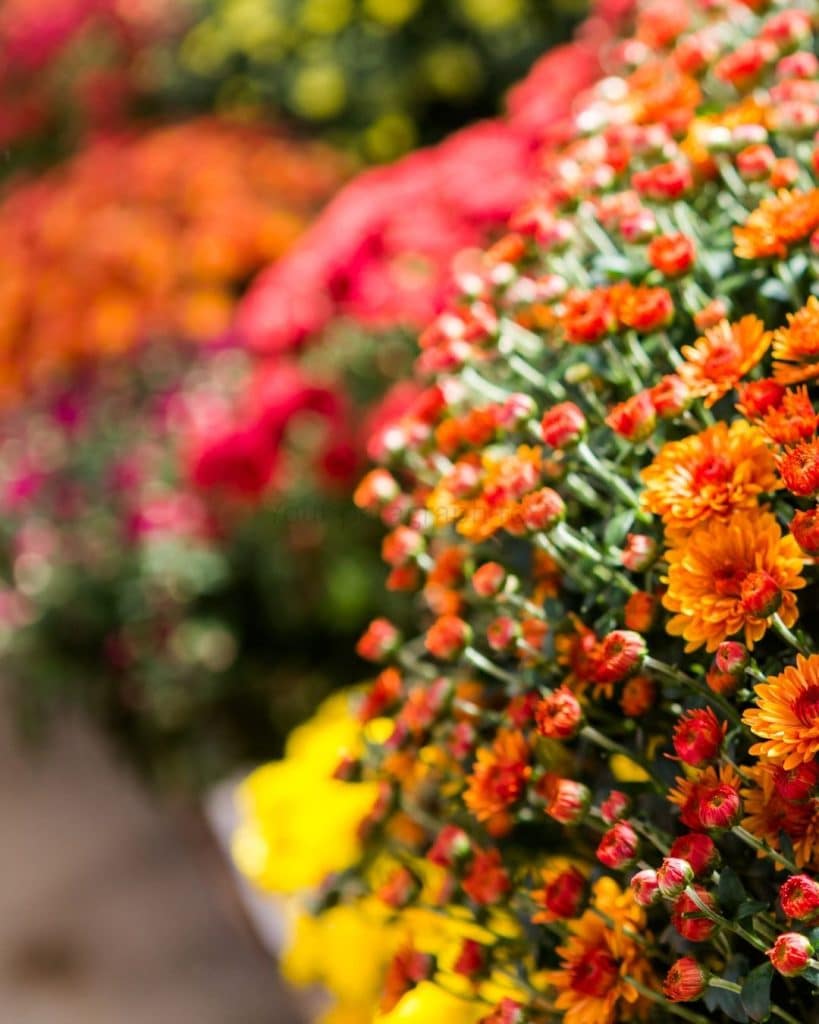
Live Long and Prosper: The name means “gold flower” in Greek, and in some cultures, mums symbolize long life and rebirth.
Preferred Light: Full sun.
Hardy mums are a fall garden staple, producing abundant blooms from early September until frost in colors like yellow, orange, red, and purple.
They perform best with at least 6+ hours of direct sun (a half day’s sun minimum). Hardy in zones 5–9, perennial garden mums reliably flower in Virginia’s autumn climate.
2. New England Aster
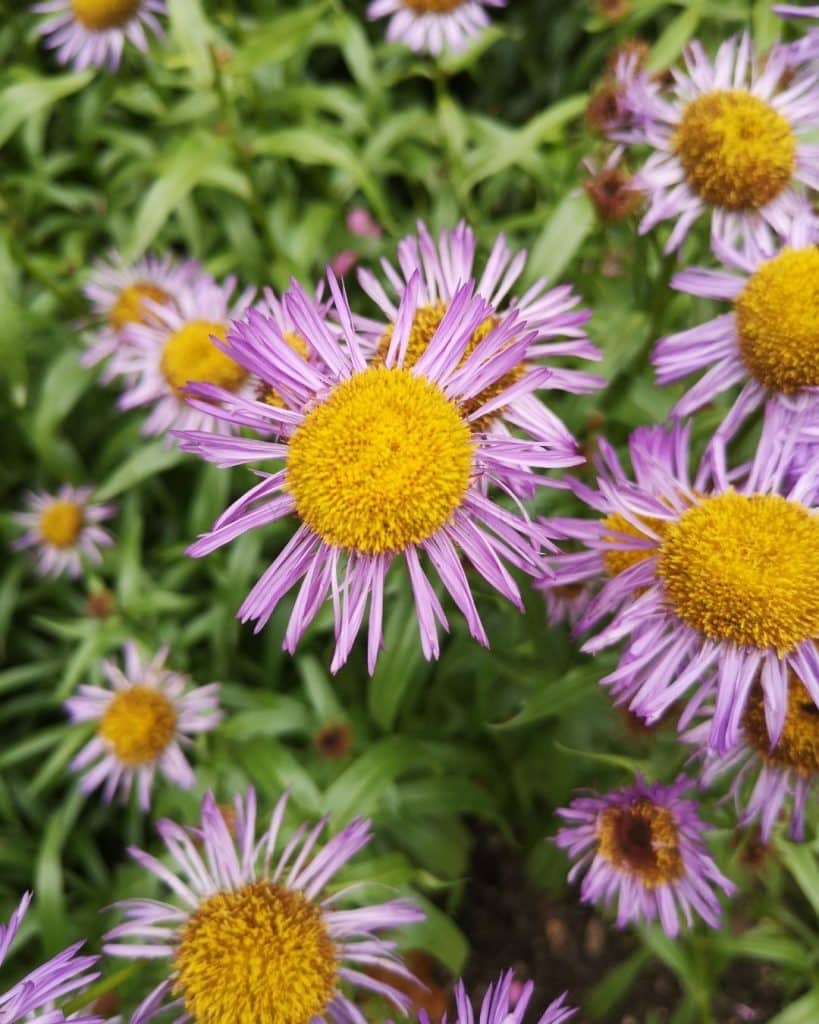
Good Enough For the General: George Washington grew asters at Mount Vernon, making them one of America’s earliest cultivated native perennials.
Preferred Light: Full sun to partial shade.
Asters burst into bloom in late summer and fall, covering themselves in daisy-like flowers of purple, pink, or lavender.
They thrive in full sun but can tolerate some afternoon shade – avoid full shade which reduces.
These perennials (typically hardy to zones 4–8) are excellent for late-season color in Virginia gardens.
3. ‘Autumn Joy’ Sedum (Stonecrop)
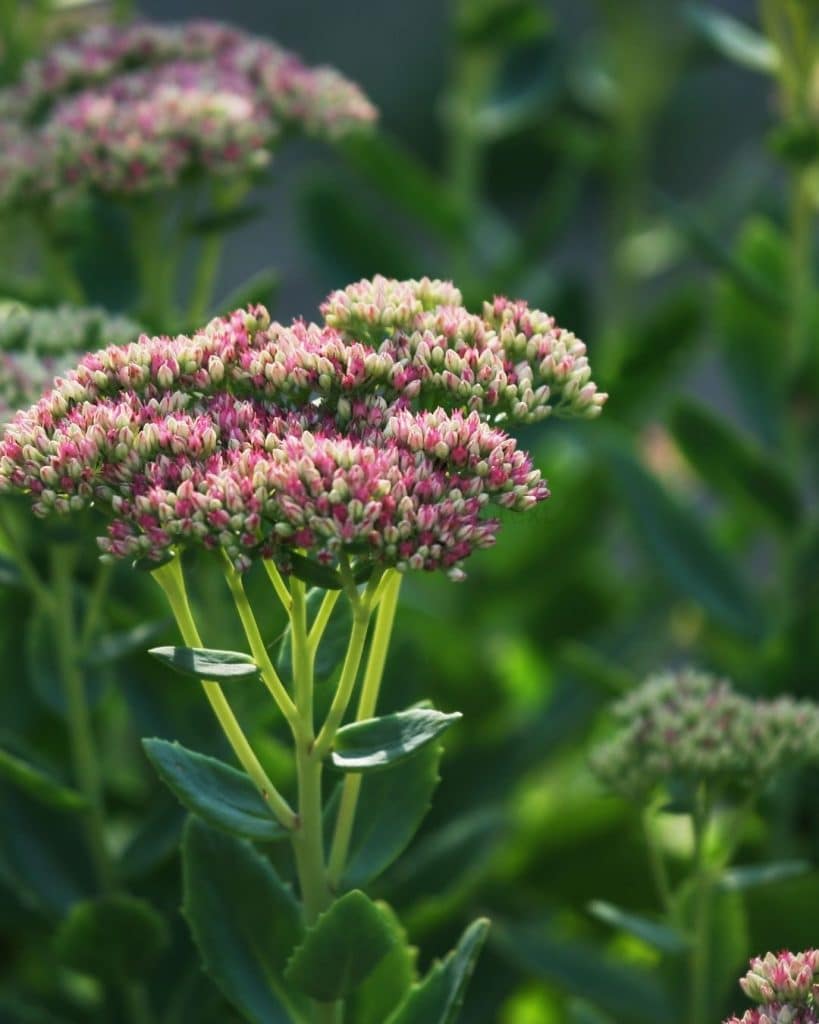
They Change Color Through The Growing Season: Its flowers change color three times—pink in summer, deep red in fall, and finally a bronze hue as winter approaches.
Preferred Light: Full sun (with light shade in hot afternoons).
This tough succulent perennial forms rosy-pink flower clusters that deepen to coppery red in fall.
It does well in full sun, though a bit of morning or afternoon shade can prevent leaf scorch in extreme heat.
Autumn Joy sedum is hardy (zones ~3 through 9) and tolerates drought, making it a low-maintenance fall bloomer in Virginia.
4. Goldenrod (Solidago)
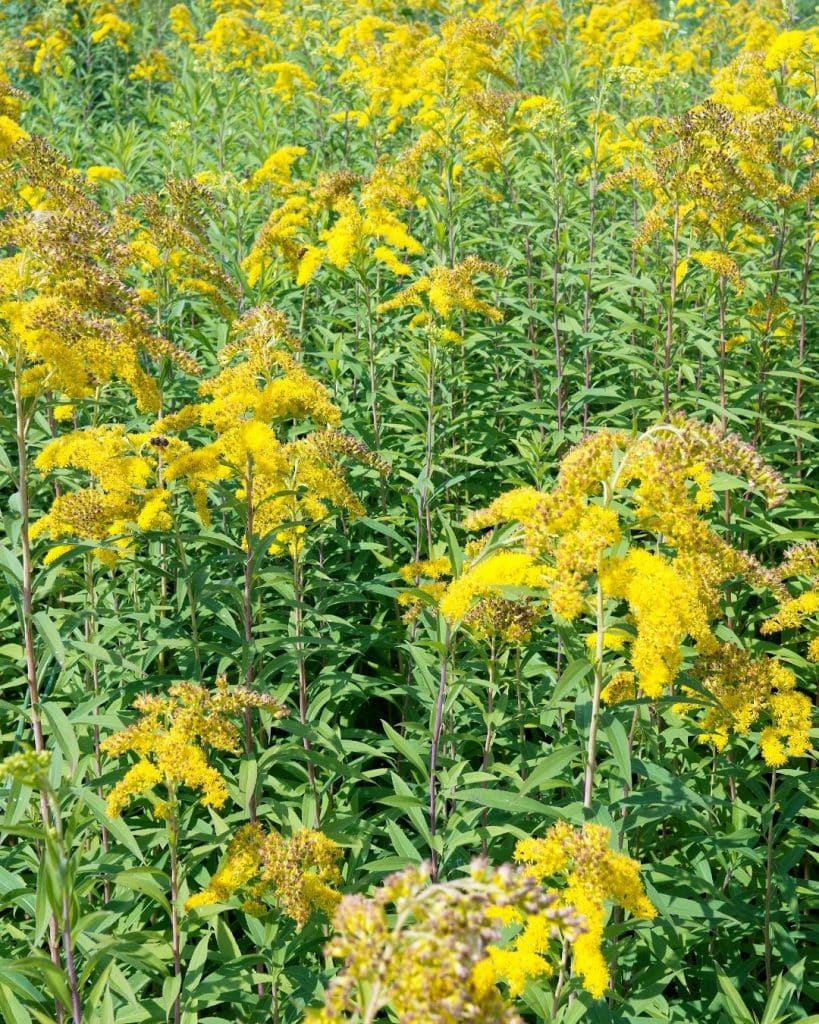
Gets a Bad Rap: Though often blamed for allergies, goldenrod pollen is actually too heavy to travel far—it’s ragweed that causes the sneezing.
Preferred Light: Full sun to partial shade.
Goldenrods light up the fall landscape with feathery plumes of golden-yellow flowers in late summer and autumn.
They are clumping, low-maintenance perennials that prosper in moist, well-drained soils under full sun or light.
Many goldenrod species (e.g. Solidago rugosa ‘Fireworks’) bloom well into October in Virginia, providing brilliant yellow color and late-season pollinator food.
5. Helenium (Sneezeweed)
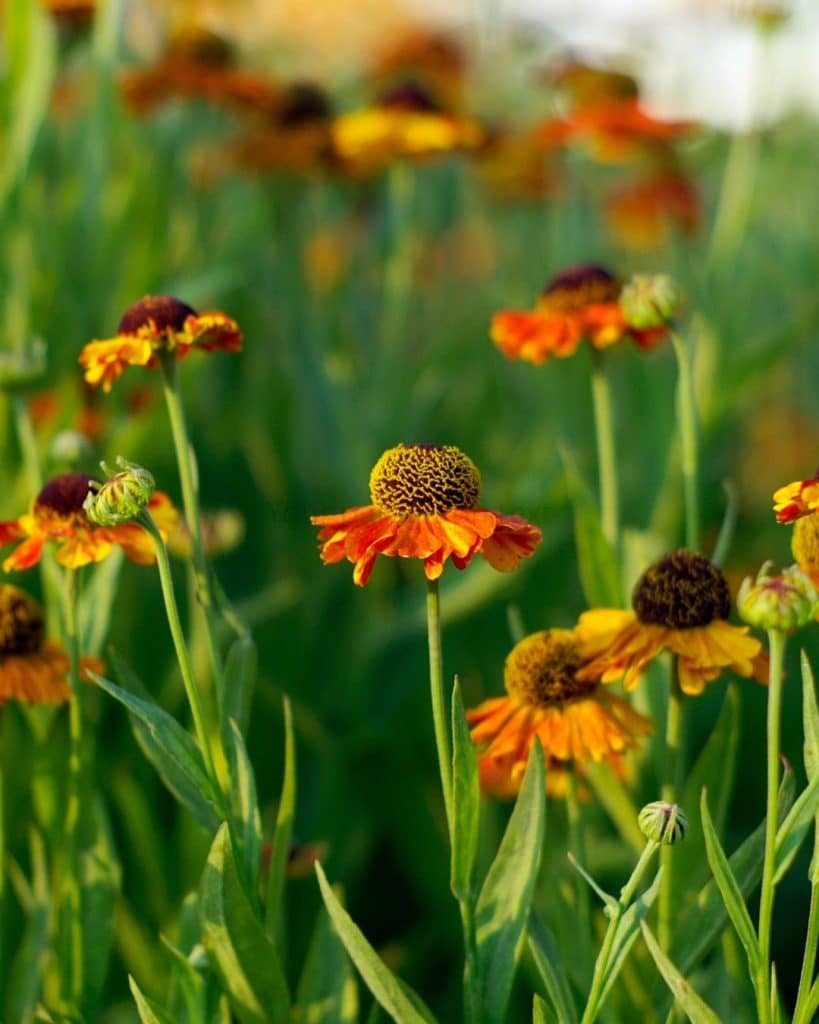
Early settlers dried its leaves and used them as a form of snuff—hence the name “sneezeweed.”
Preferred Light: Full sun to part sun.
Helenium is a sturdy perennial that blooms from late summer into fall with daisylike flowers in fiery shades of yellow, orange, and red.
It adapts to any site with sun or partial sun and moist.
Hardy in zones 3–9, sneezeweed reliably adds bright bursts of color to Virginia fall borders when given plenty of sun.
6. Blue Mistflower (Conoclinium coelestinum)
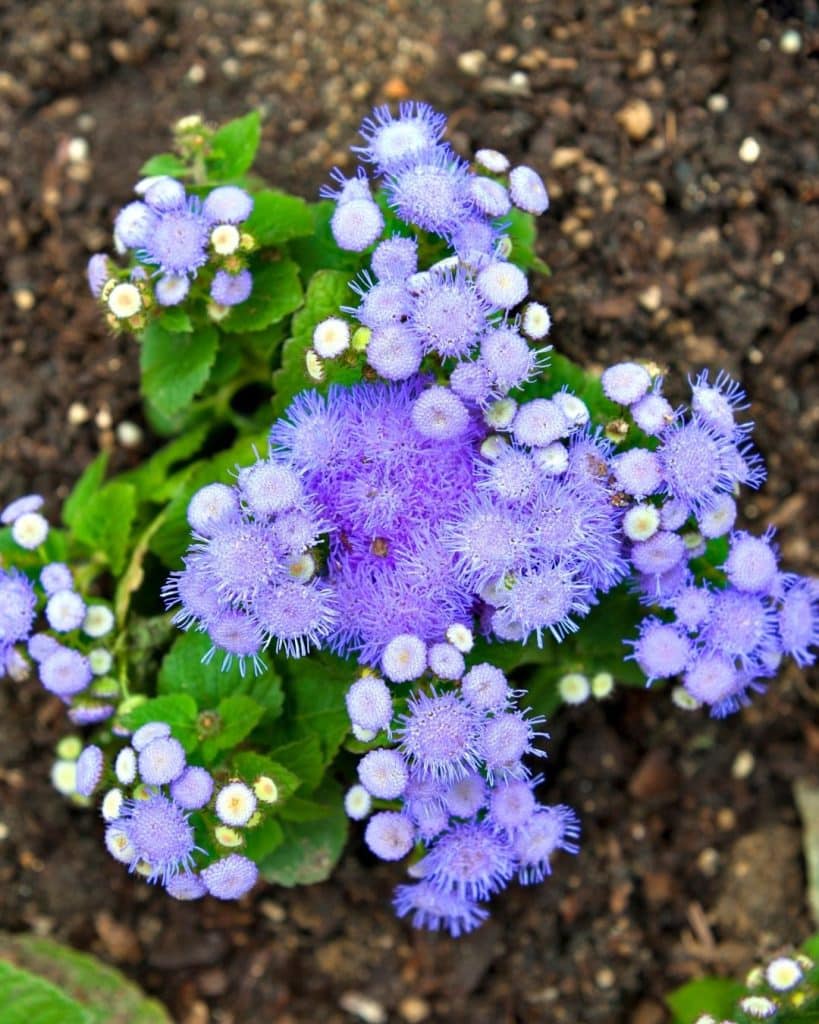
This plant spreads so vigorously that in old folk tales it was nicknamed “wild ageratum,” for its fast colonizing habit.
Preferred Light: Full sun to partial shade.
This native perennial produces fuzzy, vivid blue flower clusters from midsummer through fall, often lasting until first frost.
It flourishes in sunny spots with damp, rich soil, but can handle some partial shade, especially in the heat.
The blue mistflower spreads eagerly, so give it space or regular thinning as it paints the fall garden in bright blue.
7. Toad Lily (Tricyrtis)
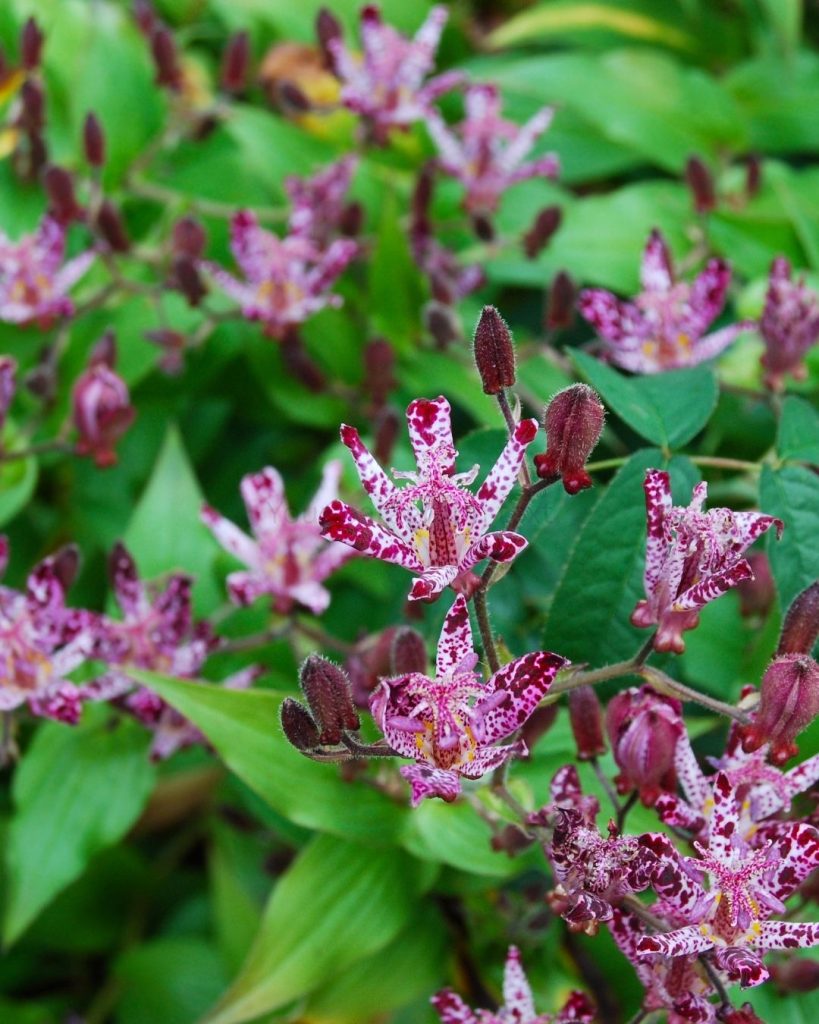
Did You Know? These spotted blooms were once considered lucky charms in Japanese folklore.
Preferred Light: Partial to full shade.
Toad lilies are shade-loving perennials that bloom in early fall with exotic, orchid-like flowers (often white or lavender with purple spots).
They perform best in woodland conditions, preferring light to deep shade and humus-rich, moist soil. In Virginia, plant toad lilies in shady borders or under trees (full sun can scorch their foliage) and enjoy their unique late-season blooms.
8. Turtlehead (Chelone)
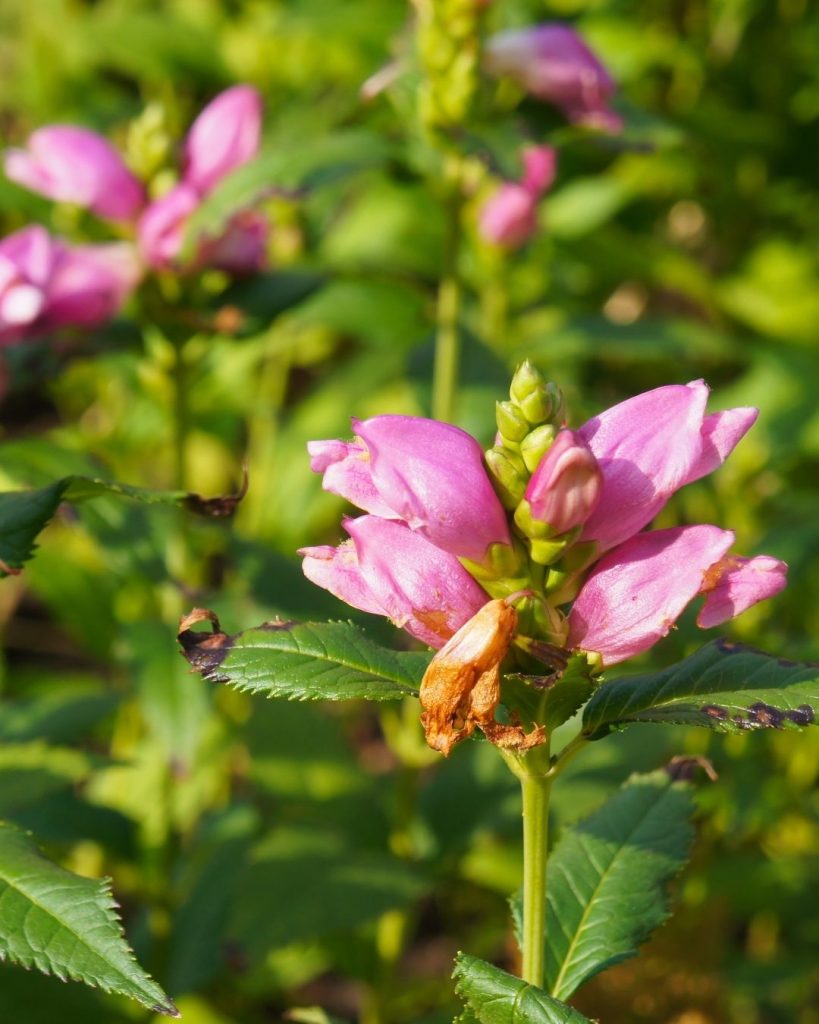
Did You Know? The flower’s snapdragon-like shape resembles a turtle’s mouth, inspiring its name.
Preferred Light: Full sun to part shade (light shade preferred in heat).
Turtlehead is a wetland-edge perennial that bears snapdragon-like pink (or white) flowers from late summer into fall.
In cooler areas it blooms best in full sun, but in Virginia’s hot summers it benefits from partial shade or afternoon shade to prevent wilting. Provide rich, moist soil and some shade, and turtlehead will reward you with masses of bright pink blooms well into autumn.
9. Japanese Anemone
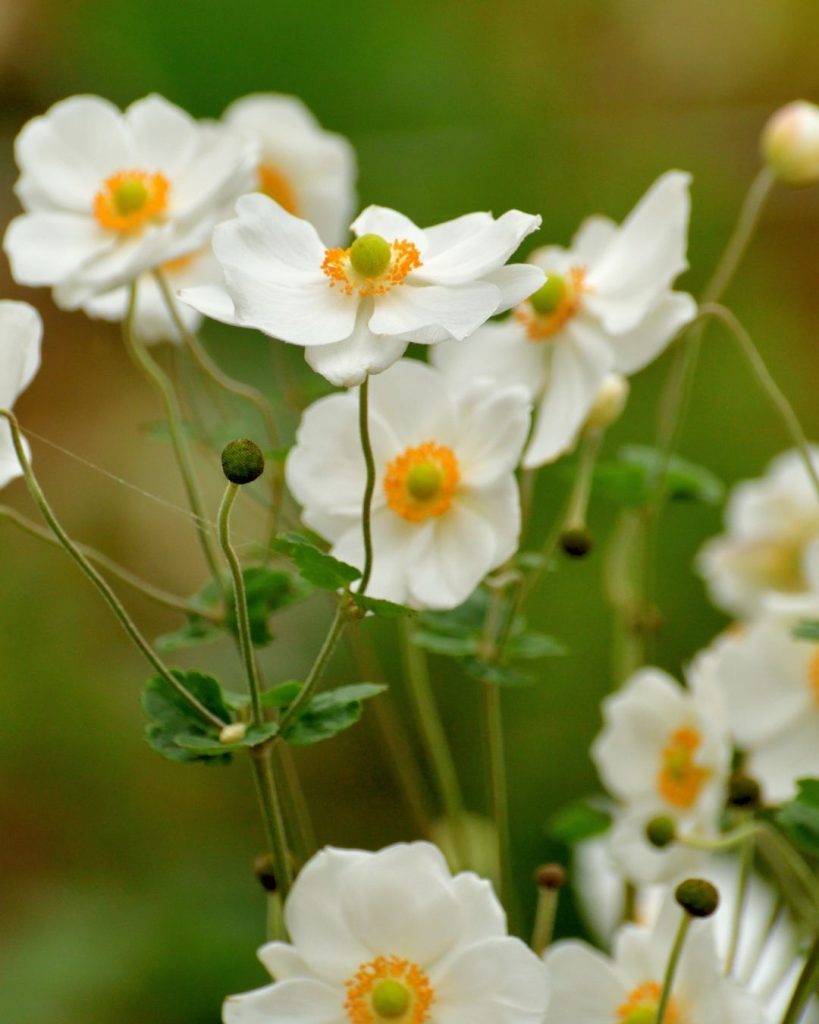
Fun Fact: Sometimes called “windflowers,” they were linked in Greek mythology to the tears of Aphrodite.
Preferred Light: Partial shade (especially in hot climates).
Japanese anemones are elegant perennials that send up tall stems of white or pink blossoms in late summer and fall.
In the South, they do best with protection from harsh afternoon sun – a part-shade location keeps their foliage from burning and drying out.
Hardy in zones 4–8, they tolerate full sun in cooler areas, but in Virginia’s zone 7, a bit of shade ensures robust fall blooms.
10. Great Blue Lobelia (Lobelia siphilitica)

Fun Fact: 🐝 Its flowers are designed so only bumblebees are heavy enough to open them for pollination.
Preferred Light: Full sun to partial sun.
This native lobelia produces deep blue tubular flowers on upright spikes from late summer into fall.
It tolerates sunny spots as long as soil is reasonably moist, and also grows well in half-day sun (partial shade). Great blue lobelia is pest-resistant and hardy, making it a low-care way to add rich blue-purple color to Virginia fall gardens.
11. New York Ironweed (Vernonia noveboracensis)
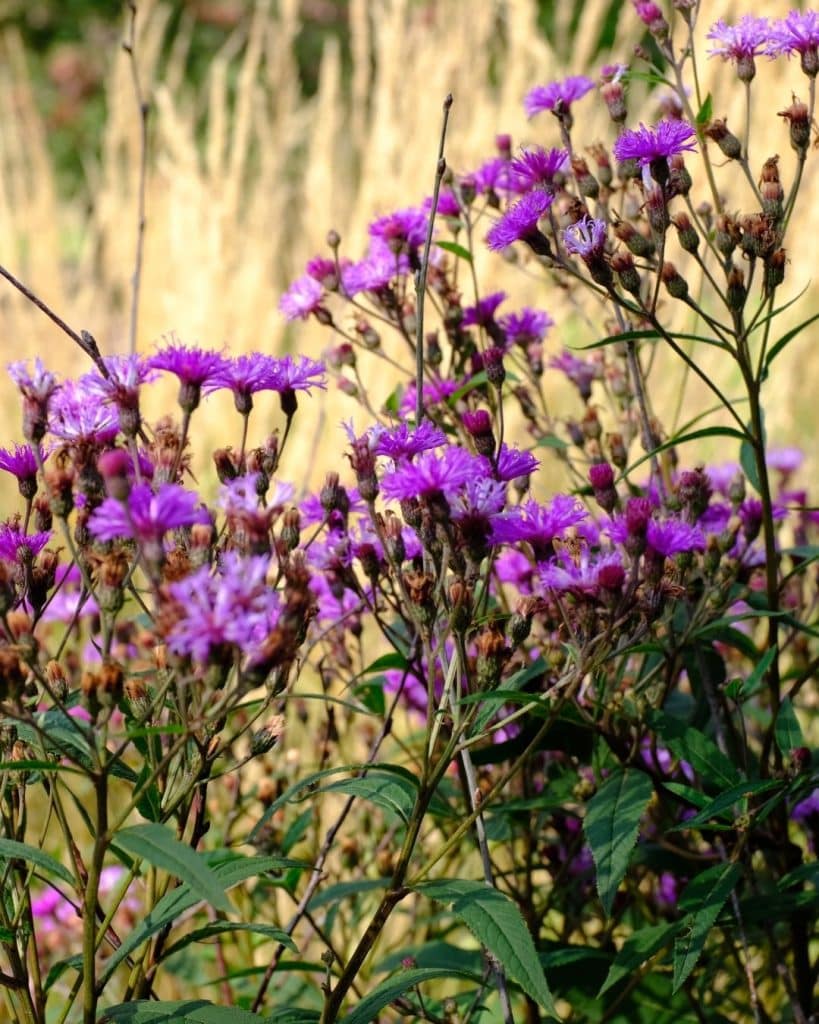
Fun Fact: Its wiry stems are so tough they inspired the name “ironweed.”
Preferred Light: Full sun (thrives in partial sun as well).
Ironweed is a tall native perennial that offers vibrant purple flower clusters from August into early fall.
It prefers at least 4-6 hours of direct sun for sturdy growth and best bloom. This hardy wildflower will tolerate part-day sun in a Virginia garden, but more sun yields fuller plants and a prolific late-season purple display.
12. Russian Sage (Perovskia atriplicifolia)
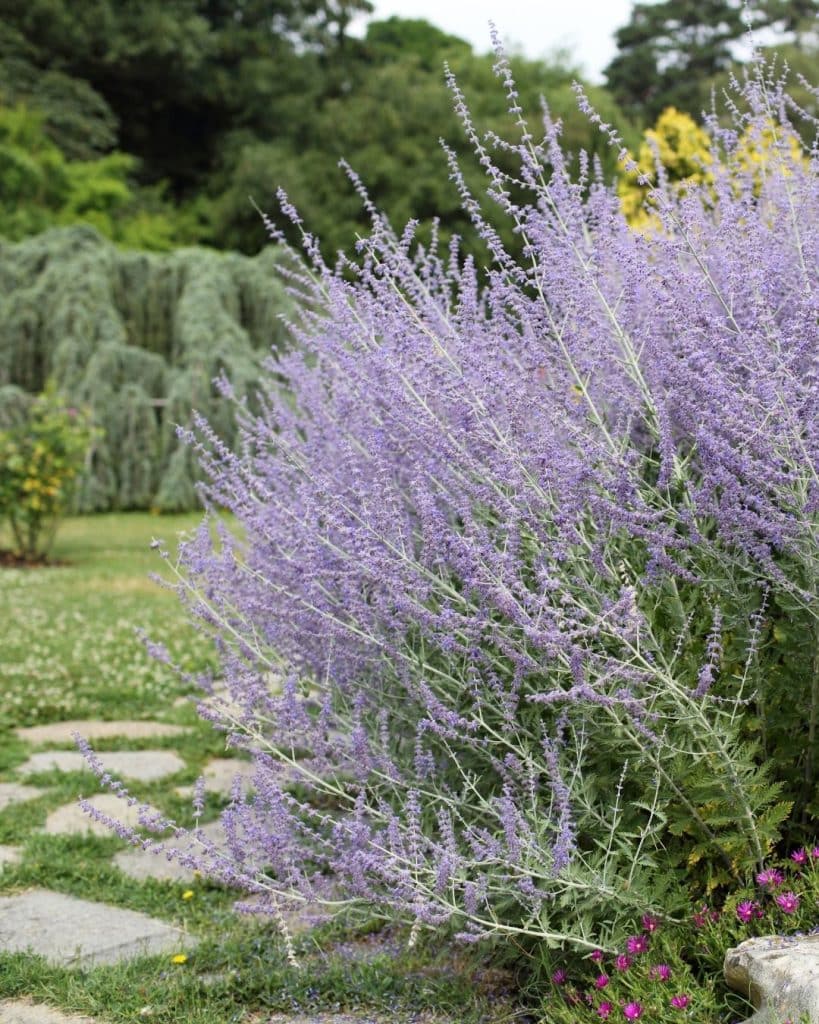
A Minty Mixup: Despite the name, it isn’t a true sage but a member of the mint family.
Preferred Light: Full sun (tolerates light shade).
Russian sage is a woody perennial sub-shrub that bears airy spikes of lavender-purple flowers from summer into fall.
It thrives in hot, dry, full-sun conditions – in partial shade it can become leggy and may flop over.
Hardy in zones 5–9, this drought-tolerant plant is perfect for Virginia’s sunny fall borders, providing a hazy purple-blue accent well into autumn.
13. Autumn Crocus (Colchicum speciosum)
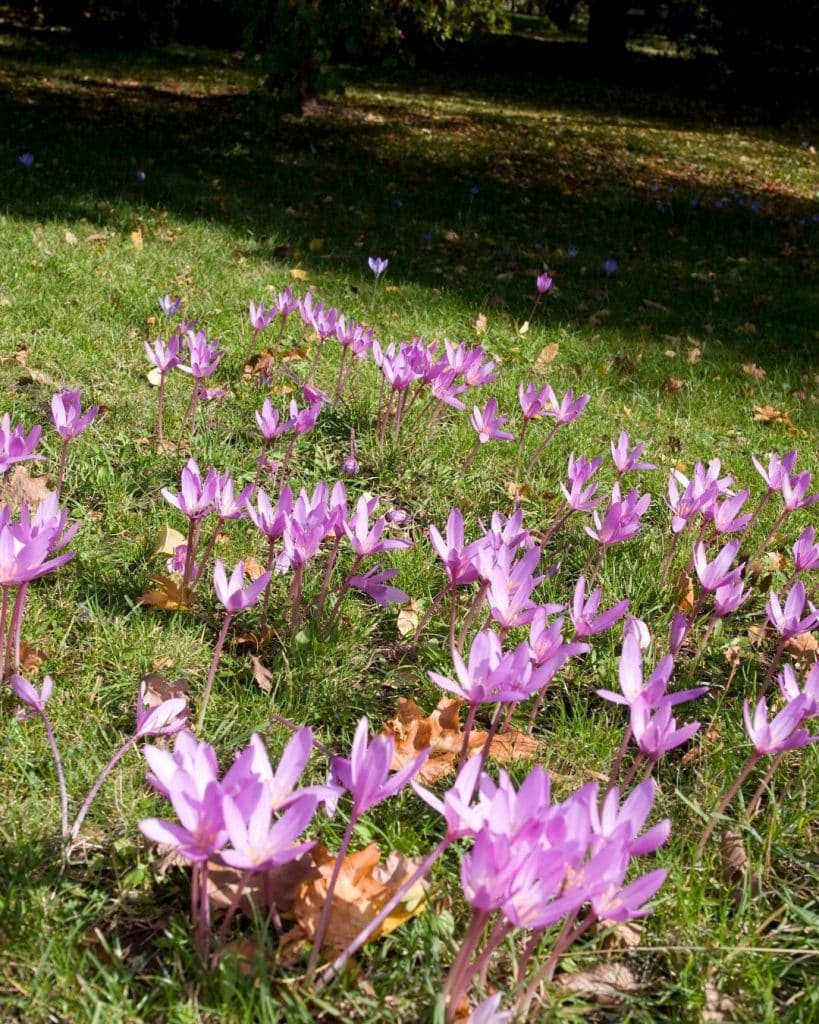
The Naked Lady?: It blooms with no leaves in sight, earning it the nickname “naked lady.”
Preferred Light: Full sun to part shade.
Autumn crocuses are fall-blooming bulbs that send up pink or purple crocus-like flowers in early fall.
They do best in sunny areas but can also bloom in partial shade.
Colchicum prefers well-drained soil; in Virginia plant them in sun-filtered spots or woodland edges for surprise splashes of color in September.
14. Dahlia
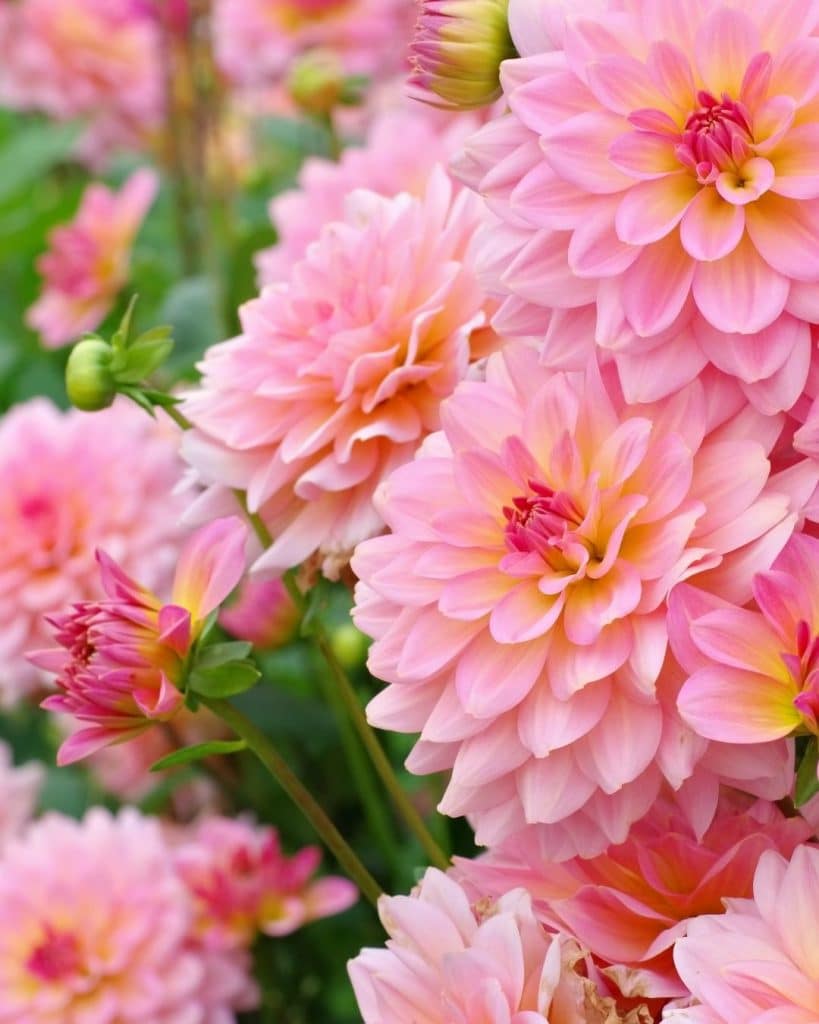
Mexico’s National Flower: Dahlias were declared Mexico’s national flower in 1963.
Preferred Light: Full sun (with some afternoon shade in extreme heat).
Dahlias are tender perennials (often grown as annuals in zone 7) that produce spectacular blooms in late summer and fall until the first frost.
They require 6-8 hours of direct sun daily for the best flower production.
In Virginia’s warm climate, full morning sun and a bit of afternoon shade help prevent heat stress while producing dazzling blooms in shades of red, orange, pink, and purple.
15. Marigold (Tagetes)
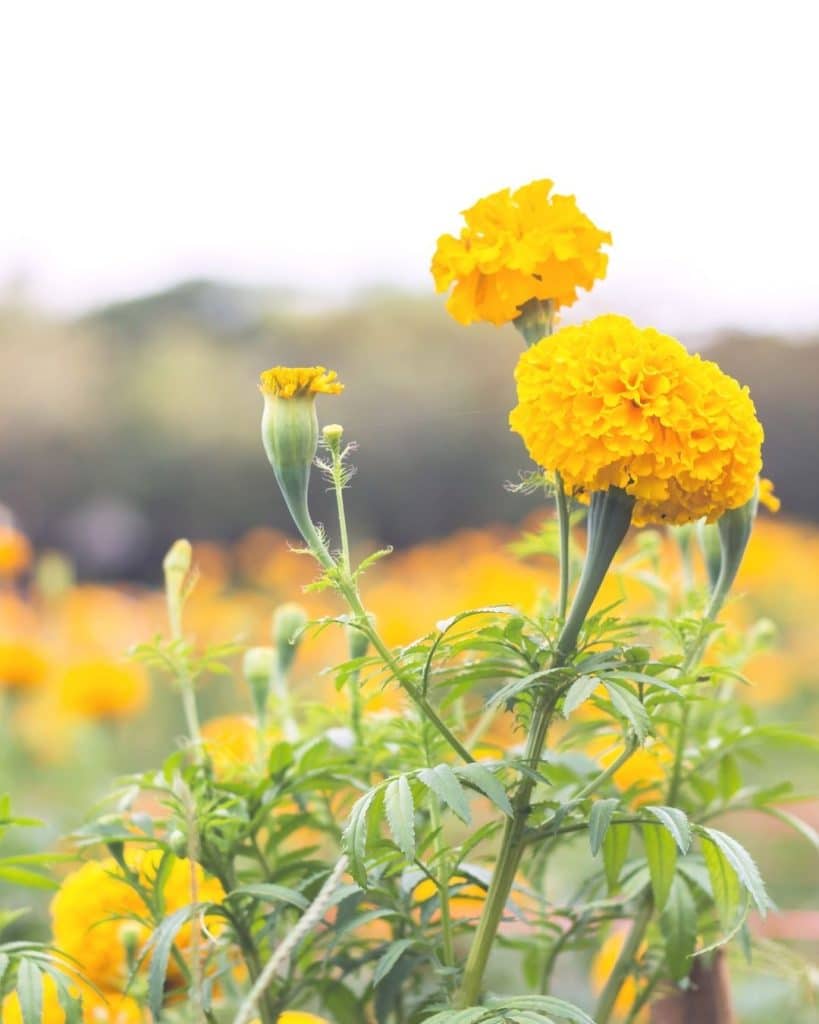
Ceremonial Flowers: Marigolds were sacred to the Aztecs, who used them in ceremonies.
Preferred Light: Full sun.
Marigolds are easy annuals that thrive in full sunshine and heat, making them ideal for late summer to fall color.
Plant them in sunny beds or containers – they will bloom profusely until frost. While marigolds can handle a bit of light shade, too much shade reduces their flower output.
16. Zinnia
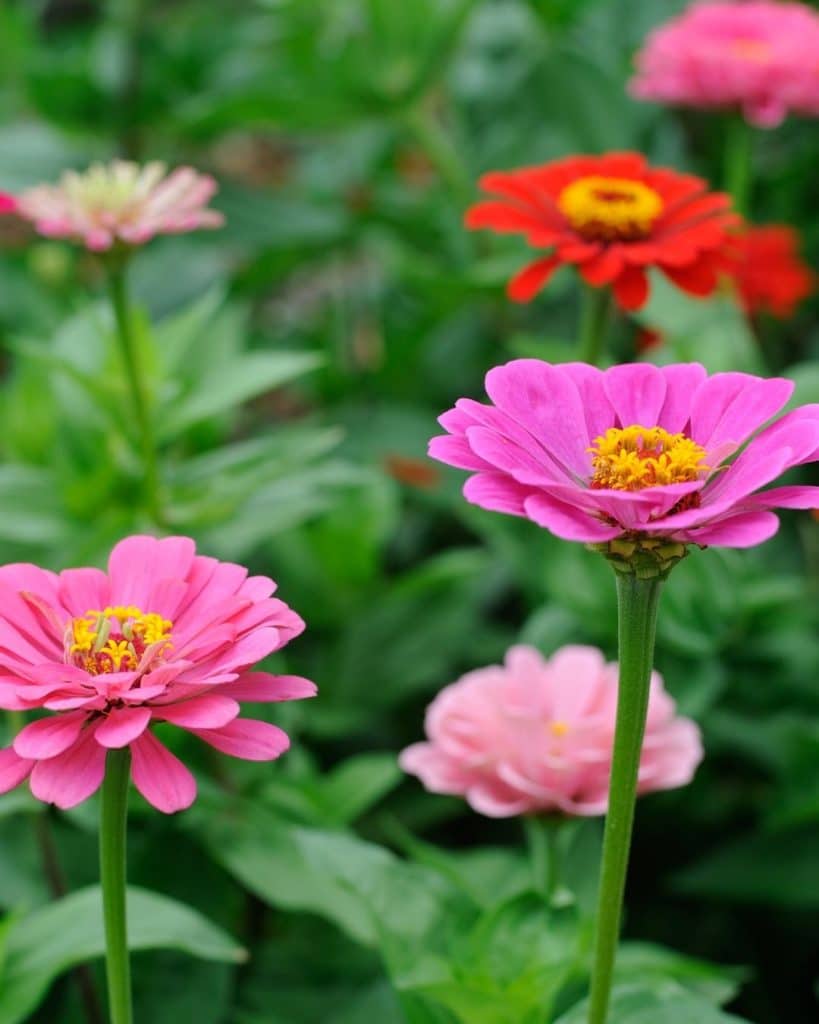
Long Lasting: Zinnias were once called “youth and old age” because their blossoms last so long before fading.
Preferred Light: Full sun (best bloom); tolerates part shade in hot weather.
Zinnias are vibrant annuals that bloom summer through fall in a rainbow of colors. They grow and flower best in full sun, needing at least 6–8 hours of direct light for plentiful blooms.
In very hot climates, they can still flower with some afternoon shade, though full sun yields sturdier, more floriferous plants. Deadhead zinnias and they’ll keep Virginia gardens lively with color until frost.
17. Pansy (Viola × wittrockiana)
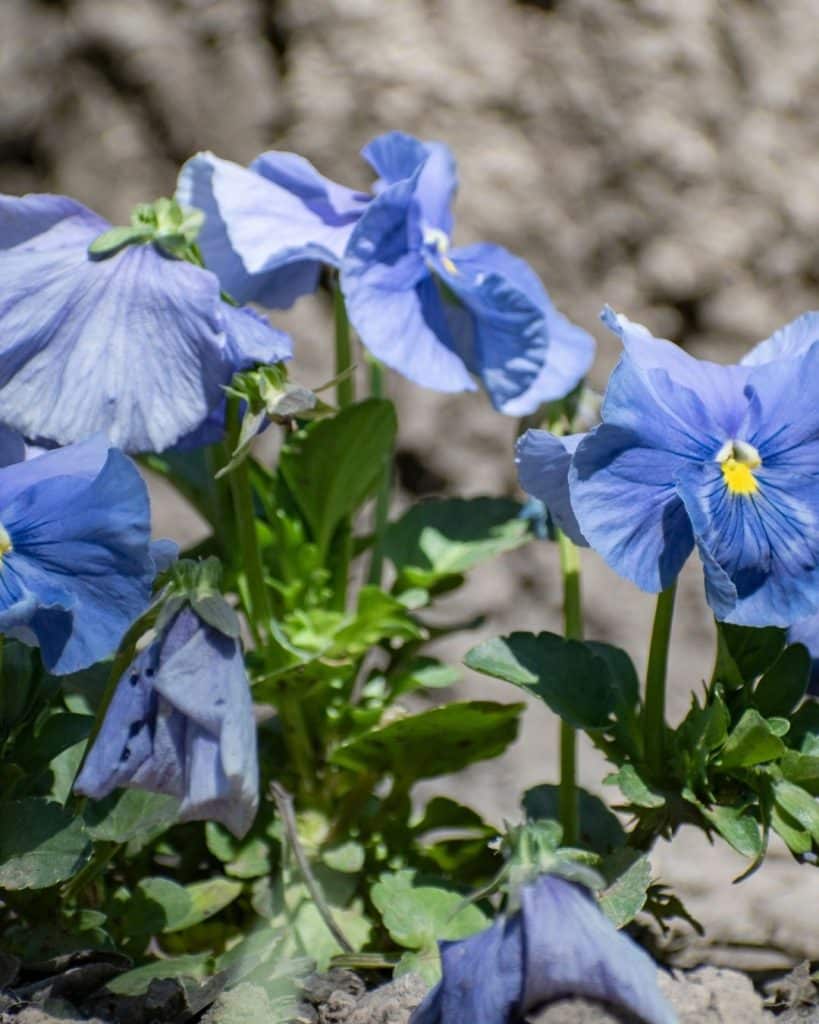
The French Connection: The name comes from the French word pensée, meaning “thought.”
Preferred Light: Full sun to partial shade.
Pansies are cool-season annuals often planted in fall for color through autumn and even winter.
They tolerate a range of light conditions from part shade up to full sun.
In Virginia, an ideal spot is one with morning sun and some afternoon shade, keeping them cool and blooming strongly into the colder months.
18. Celosia (Cockscomb)
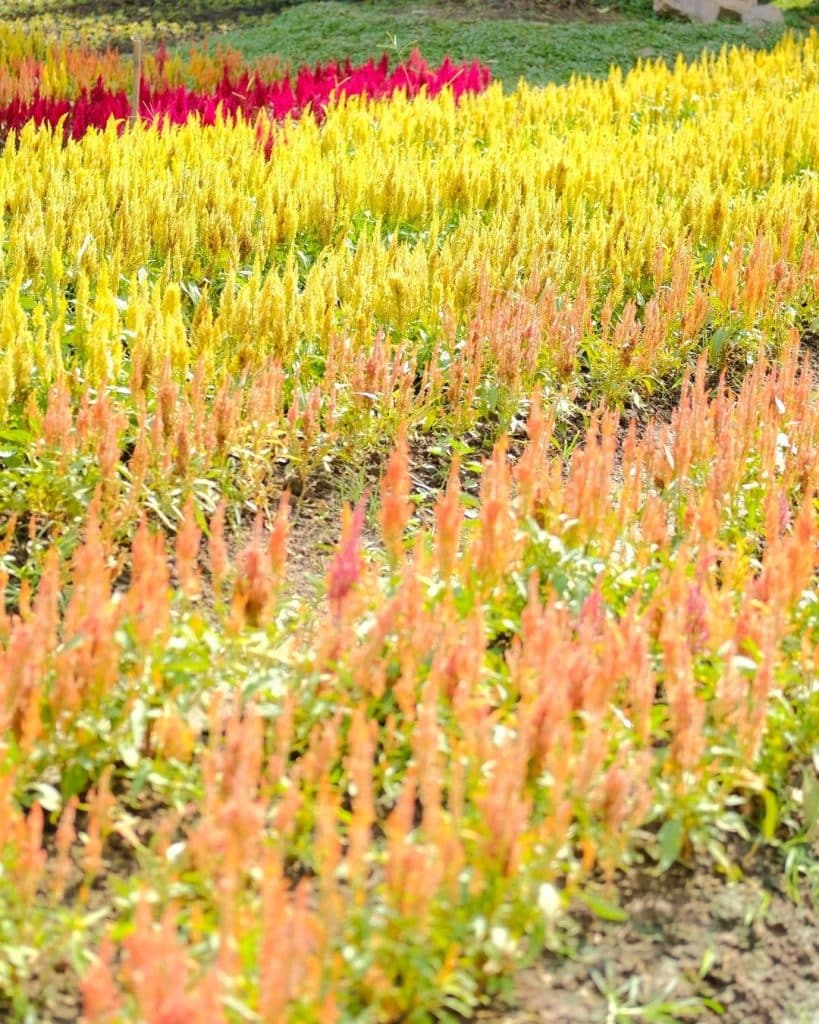
Fun Fact: Its name comes from the Latin for “burning,” referring to its flame-like plumes.
Preferred Light: Full sun (will tolerate partial shade).
Celosias are annual flowers known for their bold, plume-like or crested blooms in fiery shades of red, orange, pink, and yellow.
They perform best with at least 6–8 hours of sun daily. In Virginia’s fall gardens, celosia keeps its long-lasting, flame-colored flowers well into autumn.
19. Montauk Daisy (Nipponanthemum nipponicum)
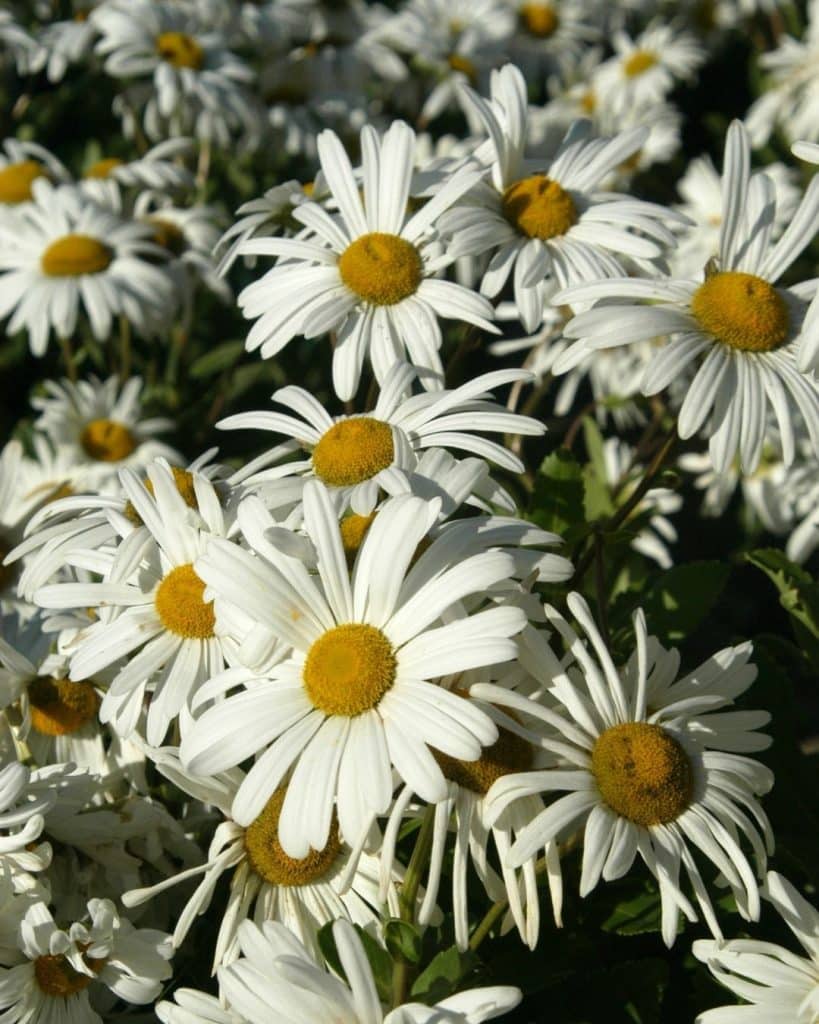
Keeps blooming DEEP into Fall: It’s one of the very last perennials to bloom, often lasting until Thanksgiving.
Preferred Light: Full sun to partial sun.
Also called Nippon daisy, this shrub-like perennial daisy blooms in early to mid-fall with masses of white, yellow-centered flowers.
It prefers full sun and well-drained soil for sturdy growth and best flowering. Hardy in zones 5–9, the Montauk daisy is a great choice for extending “daisy season” in Virginia gardens into October and beyond.
20. Gaillardia (Blanket Flower)
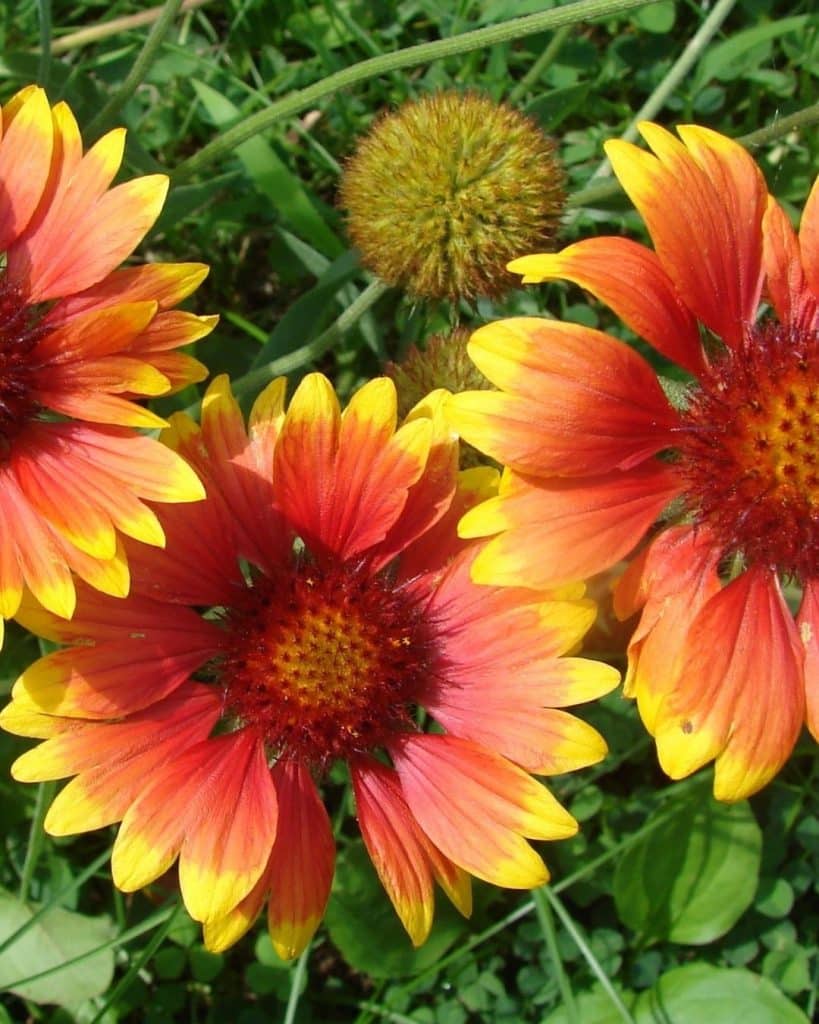
Fun Fact: Its name comes from its resemblance to brightly patterned Native American blankets.
Preferred Light: Full sun.
Blanket flowers are long-blooming perennials (often grown as annuals) that feature bold red, orange, and yellow daisy-like blooms from late spring through fall.
They demand plenty of sun to keep producing flowers and thrive in hot, dry conditions. In Virginia’s full sun, they will deliver a brilliant “blanket” of color well into autumn.
21. Camellia sasanqua (Autumn Camellia)
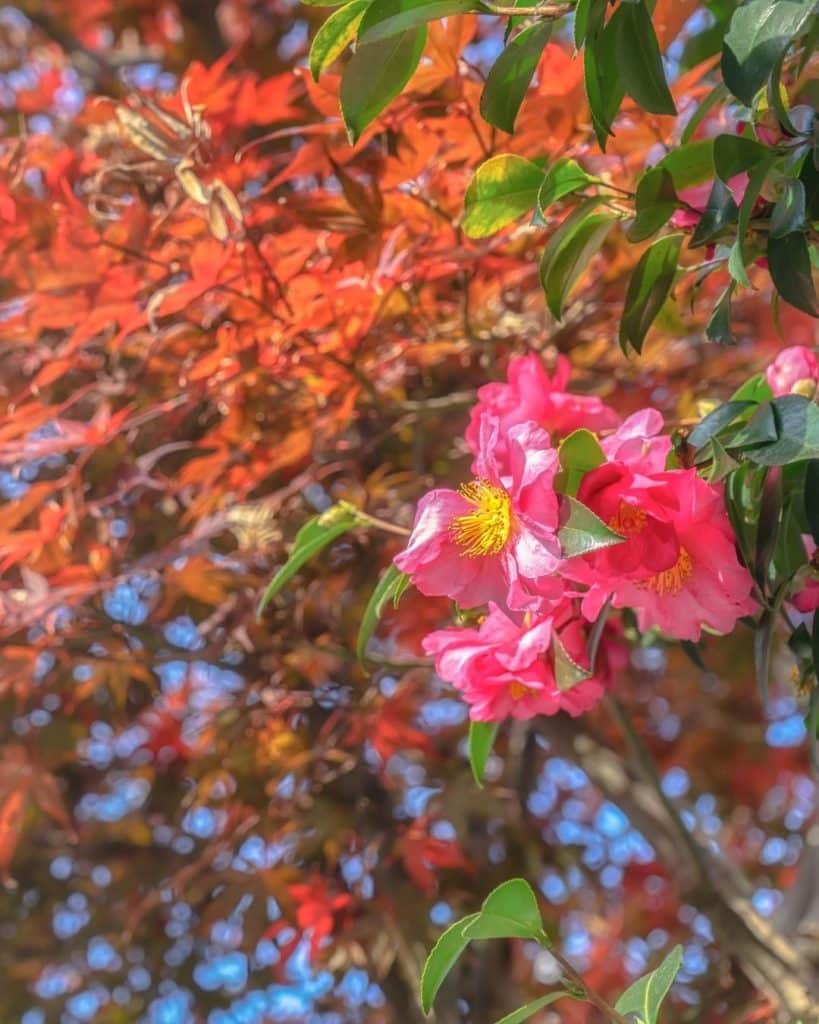
Fun Fact: In Japan, camellias are considered a symbol of the coming of winter.
Preferred Light: Partial shade (bright light but avoid harsh afternoon sun).
Sasanqua camellias are evergreen shrubs that bloom in fall (as early as October) with rose-like flowers in hues of white, pink, or red.
They thrive with morning sun and afternoon shade in Virginia, producing abundant blooms without leaf scorch. Hardy in zones 7–8, they bring shrub-sized elegance to autumn landscapes.
22. Autumn Sage (Salvia greggii)
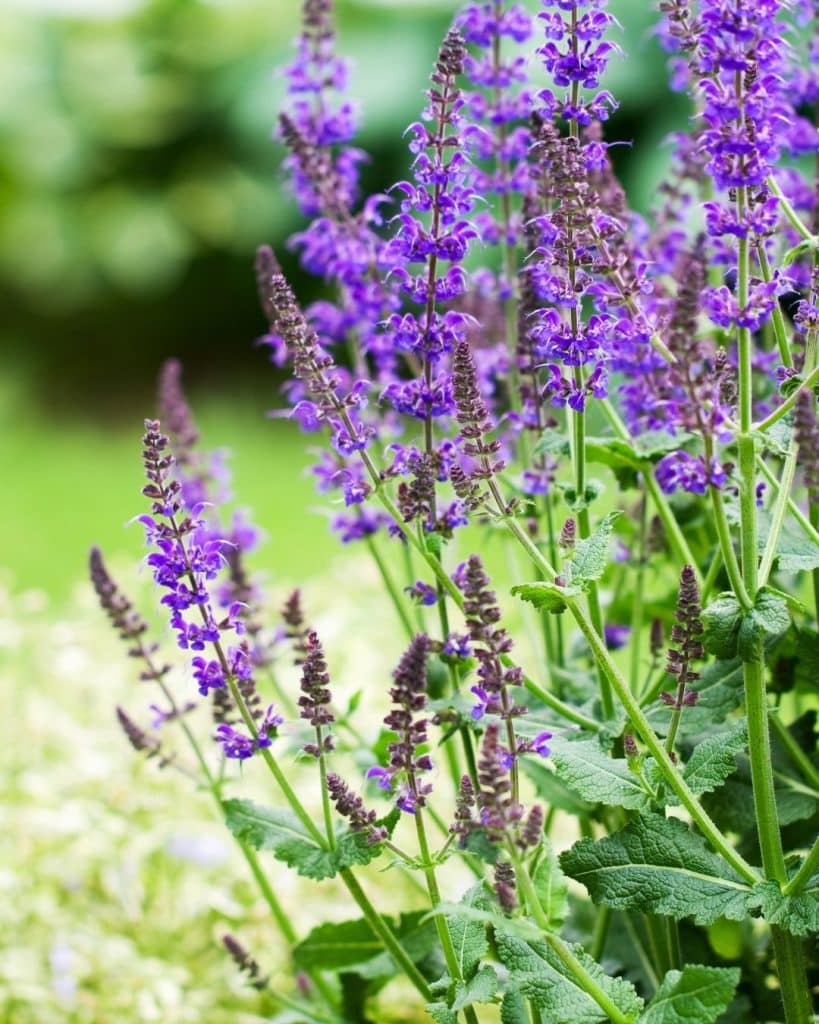
You Can Eat That Thing?: Its flowers are edible and sometimes used as colorful garnishes in drinks and desserts.
Preferred Light: Full sun to partial shade.
Autumn sage is a woody sub-shrub (hardy in zones 7–9) that flowers from summer until frost, often peaking in fall with flushes of red, pink, or purple blooms.
It thrives in full sun and well-drained soil. In very hot or dry conditions, plants appreciate a bit of partial shade to prevent scorching, but too much shade reduces flowering.
23. Cosmos
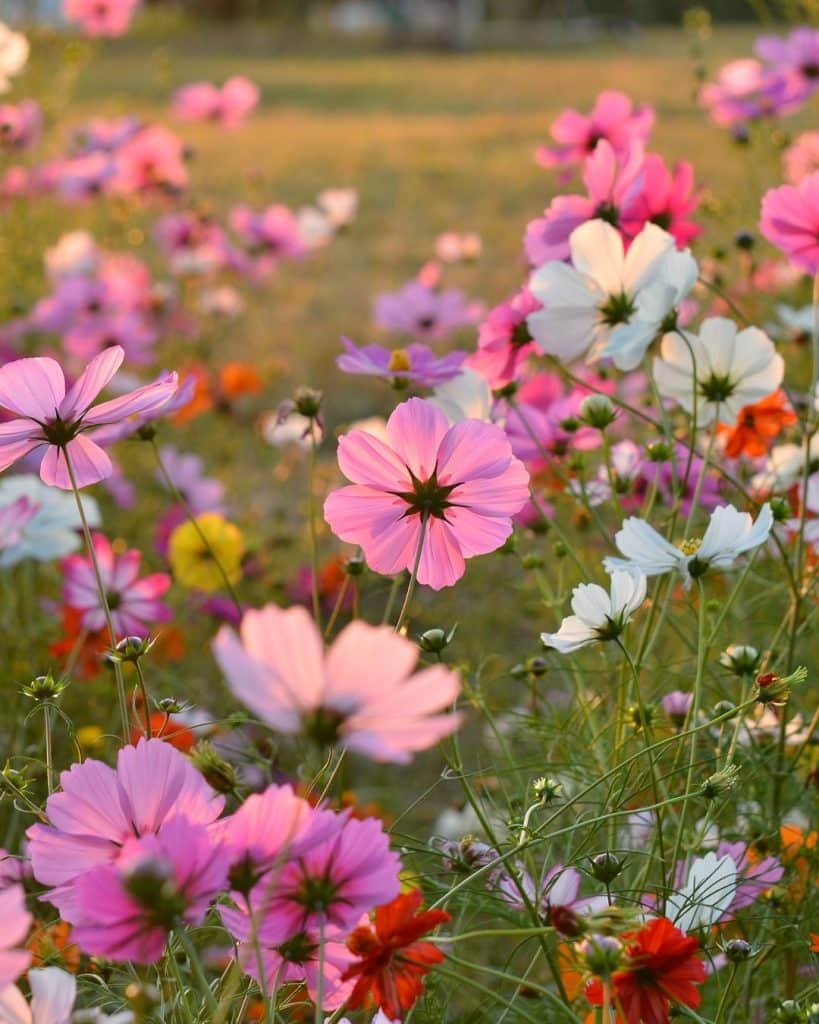
Peace be With You: Spanish priests in Mexico named them “cosmos” because of their perfectly balanced petals.
Preferred Light: Full sun (tolerates a touch of afternoon shade).
Cosmos are airy annuals that produce an abundance of daisy-like flowers in shades of pink, white, magenta, or orange from midsummer to autumn.
They need at least 6 hours of direct sun daily for continuous bloom. In Virginia, cosmos enliven fall gardens until frost with their delicate, colorful flowers.
24. Swamp Sunflower (Helianthus angustifolius)
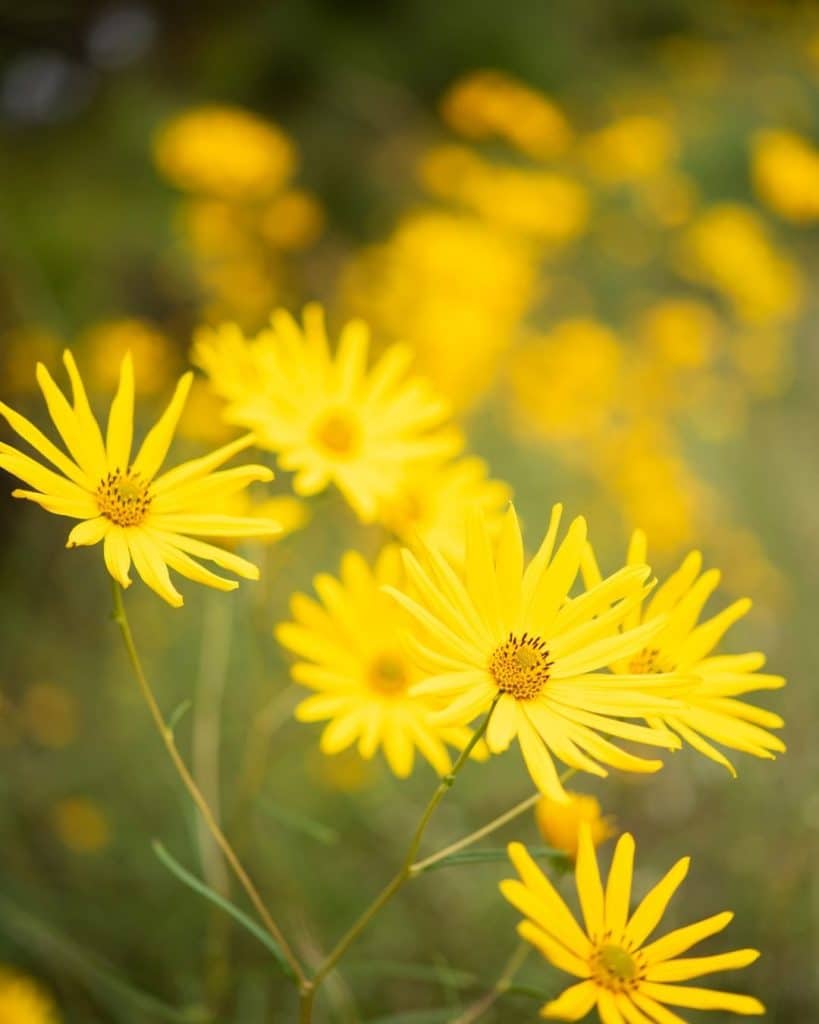
Fun Fact: Despite preferring wet soil, once established it can handle drought surprisingly well.
Preferred Light: Full sun to partial shade.
A native perennial sunflower, swamp sunflower reaches 5–8 feet tall and explodes with bright yellow daisy-like blooms in late September and October.
It thrives in full sun and moist soil, forming sturdy clumps that bring a big splash of gold to Virginia’s autumn landscapes, complementing asters and goldenrods beautifully.
25. Obedient Plant (Physostegia virginiana)
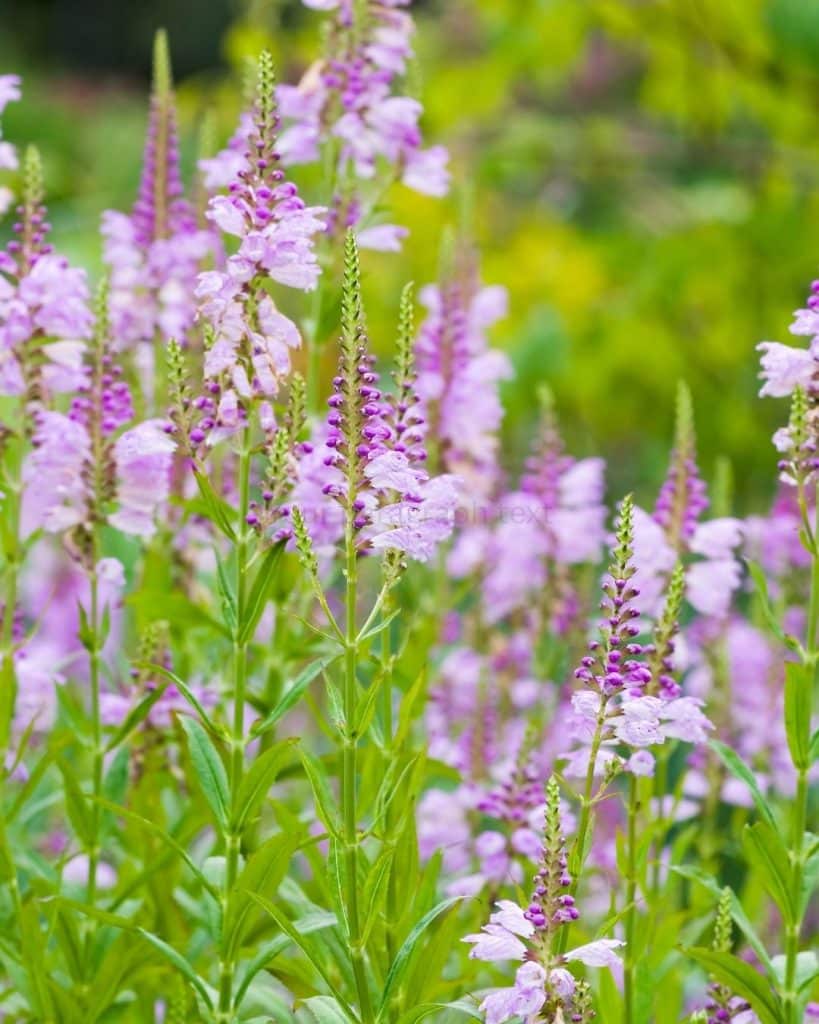
Its flowers stay in place if you push them to one side of the stem—hence the name “obedient.”
Preferred Light: Full sun to partial shade.
Obedient plant is a hardy perennial that spikes in late summer/fall with pink or white tubular blooms.
It prefers plenty of sun for upright growth and abundant floweringplants.ces.ncsu.edu, though it will also do well in part shade (which can help soils stay moist).
In Virginia’s climate (zones 3–9), it will thrive in average to damp soil, adding reliable fall color in sunny or lightly shaded beds.
Thank you so much for reading, and enjoy your fall!